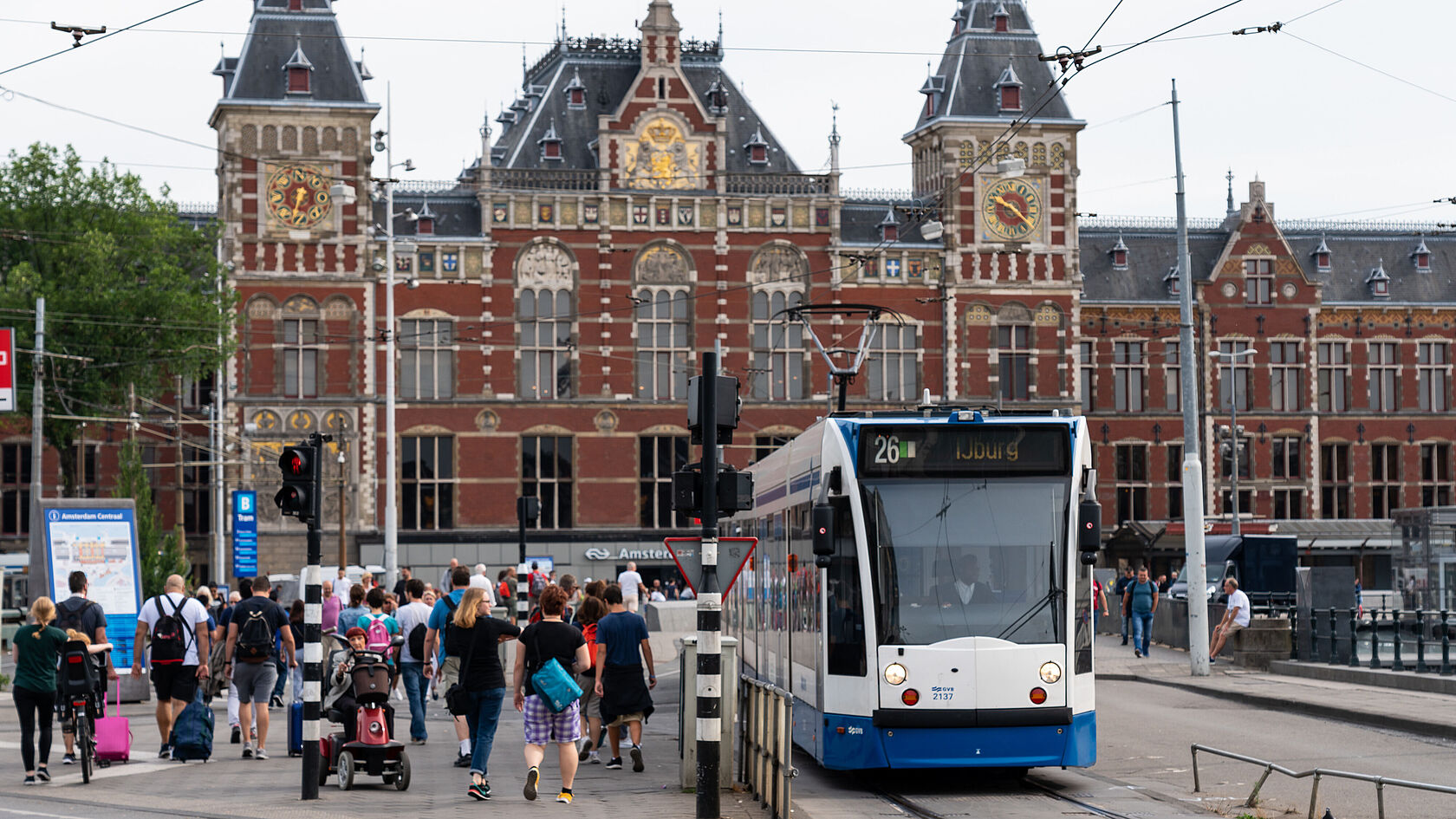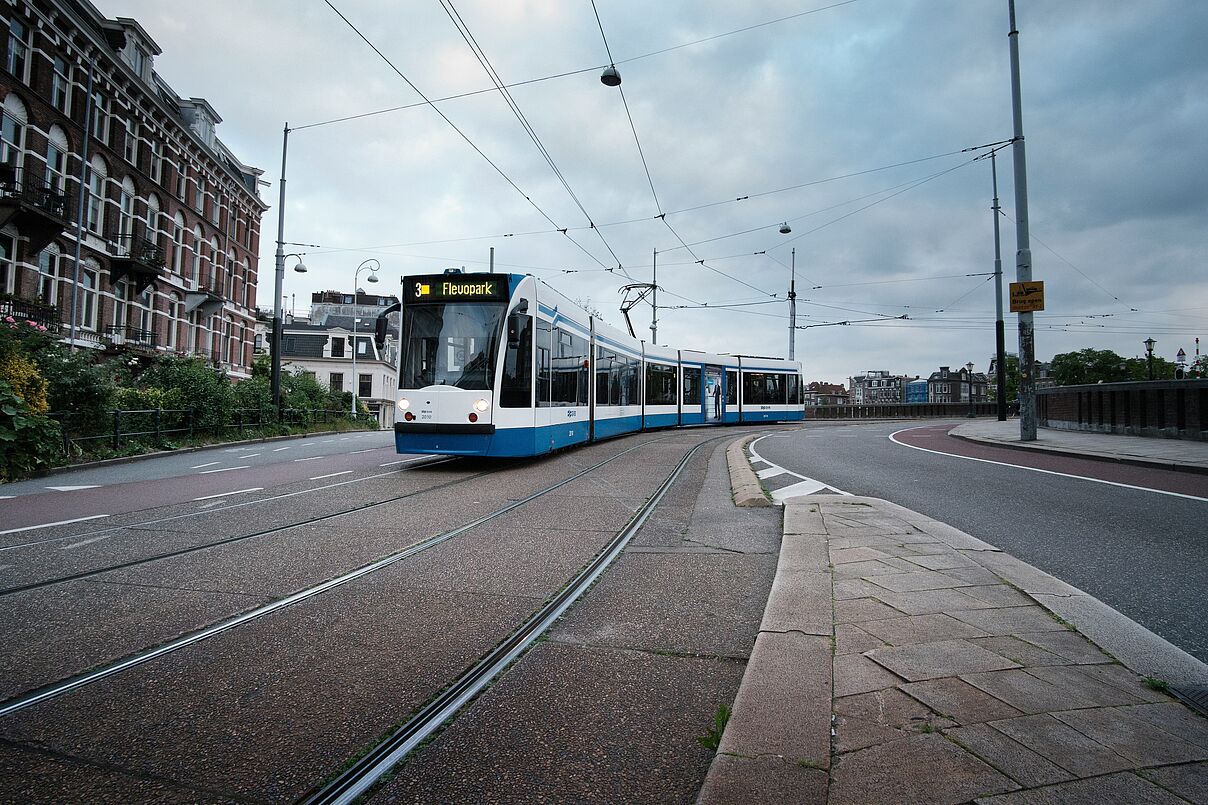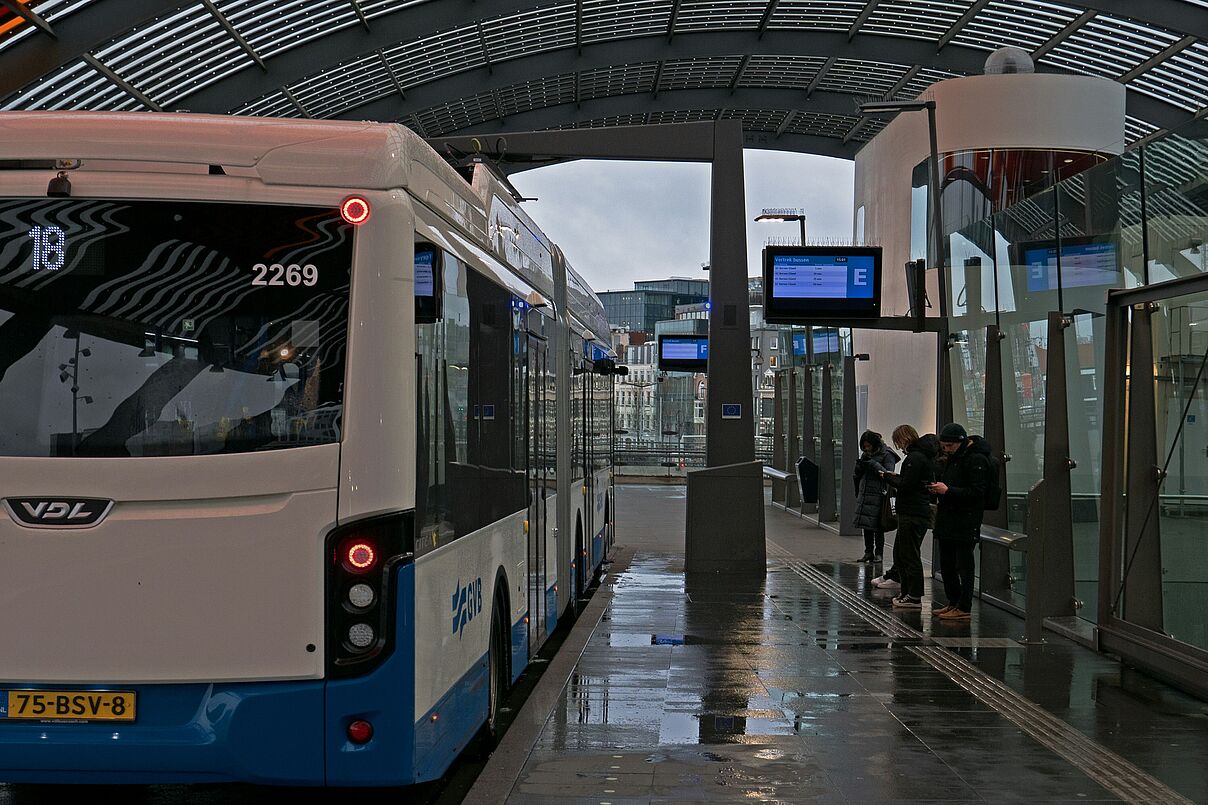
Case Study Modernization of the operations control system and cloud migration
GVB Amsterdam modernized its PSItraffic/AVMS and migrated to the cloud to improve real-time passenger information.
GVB Exploitatie B.V. has modernized its operations control system and migrated it to the cloud to optimize passenger information and improve the customer experience. The new system enables more precise vehicle location and faster information processing, resulting in near-real-time passenger information.
About GVB
The GVB (Gemeentelijk Vervoerbedrijf) is the backbone of public transport in Amsterdam and the surrounding area. With an extensive network of buses, trams, metros and ferries, the company transports over 800,000 people every day. The focus is always on the needs of passengers: punctuality, reliability and an excellent customer experience are top priorities.
However, as an innovation driver for sustainable mobility, GVB goes beyond the pure transportation function. By using the latest technologies, public transport is constantly being developed to make it even more attractive and efficient. With a clear view of the future, GVB is continuously working to improve the travel experience and actively shaping the urban mobility of tomorrow.
Challenges
Such a large transportation network, with a multitude of lines, vehicles and fare options, is highly complex. How do you keep track of it all while providing passengers with a simple and intuitive way to find information and plan their trips? GVB was challenged with creating a seamless customer experience that is both informative and user-friendly.
Mastering complexity – enhancing the customer experience
Passengers expected precise real-time information on
- travel times,
- delays and
- disruptions.
At the same time, access to timetables, fare information and ticket purchases should be as easy as possible. GVB needed a solution that met these requirements while also increasing the efficiency of control center operations.

Objectives
The GVB had a clear vision: a central point of contact for all customer needs relating to public transport in Amsterdam. This platform was not only to provide information, but also to be interactive and allow passengers to play an active role in planning their journeys.
Simple. Informative. Interactive
GVB wanted a modern and intuitive user interface that would work optimally on all devices. Passengers should be able to access timetables, receive real-time information, purchase tickets and subscribe to personalized notifications. At the same time, the system should support the control center in efficiently managing operations and quickly responding to disruptions.
In addition, GVB wanted to be able to determine the exact location of vehicles in order to further improve the quality of traffic management and passenger information. The system should be able to detect deviations from the timetable as early as 15 seconds and inform both the control center and passengers in real time.
Another important goal was to migrate the entire IT system to the cloud in order to benefit from the advantages of scalability and cost efficiency. The new system should also be flexibly expandable in order to easily integrate future requirements, such as the introduction of a new depot management system or the renewal of on-board computers.
Solution approach
In order to achieve the goals set by GVB, a comprehensive upgrade of the existing PSItraffic/AVMS operations control system was carried out. At the same time, the system was migrated to the cloud to ensure scalability and flexibility. The focus was always on user-friendliness – for passengers as well as for control center personnel.
A focus on user experience
The upgrade of the PSItraffic/AVMS enabled a more modern user interface, more precise vehicle location and faster response to disruptions in operations. The simultaneous migration to the Azure cloud brought advantages such as scalability and cost savings.
To ensure a smooth transition, the old and new systems were operated in parallel for a while. This allowed employees to be gradually introduced to the new solution and any potential problems to be identified and resolved at an early stage.
These measures enabled GVB to improve the punctuality of its vehicles, optimize passenger information and make operations more efficient overall. The modernization and migration thus made a significant contribution to achieving the company's goals and prepared GVB for future challenges in public transport.

The result
The upgrade of PSItraffic/AVMS and the migration to the cloud have led to a significant improvement in the customer experience. Passengers are more satisfied, the control center is more efficient and GVB is well equipped for the future.
Impressive figures – enthusiastic customers
Concrete figures prove the success: the delay in passenger information has been reduced by almost 50 percent. Passengers receive information faster and more precisely, which leads to higher satisfaction. Thanks to the improved overview, the control center can respond faster to disruptions and optimize operations. The cloud infrastructure also offers the necessary flexibility for future expansions and adaptations.
faster passenger information was achieved.
Outlook: GVB on the road to digital mobility of the future
The collaboration between GVB and PSI Transcom shows how real added value can be created by using the latest technologies and consistently focusing on the needs of customers. The project is a successful example of how digitization can make public transport even more attractive and efficient.
GVB now has a high-performance and future-oriented PSItraffic/AVMS that benefits both passengers and control center staff. The migration to the cloud also offers the scalability and flexibility needed to meet future requirements.
The project is a complete success and an important step towards even better and more sustainable mobility in Amsterdam.

![[Translate to English:] PSItraffic/ITCS](/fileadmin/_processed_/6/3/csm_20200214_GVB-EBS2.1_Screenshot_Linienband_GIS_k_caf700d75b.png)
